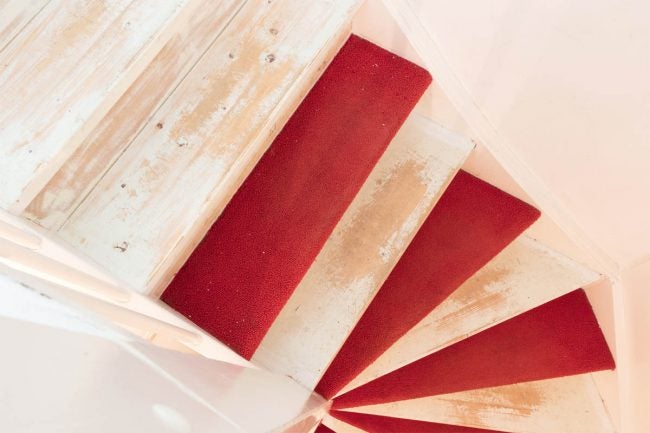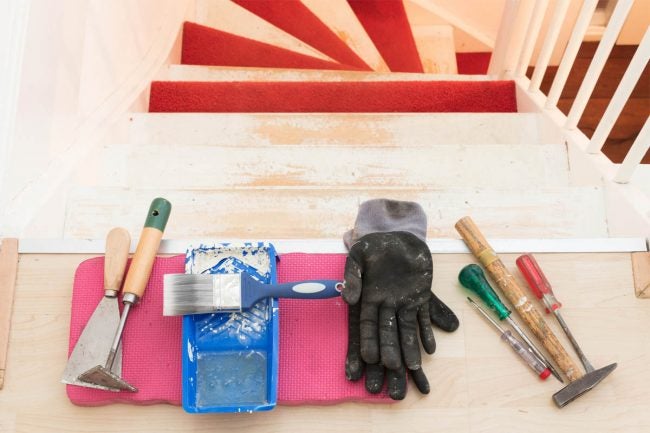5 Things to Know When Removing Carpet from Stairs
Keep these tips in mind before giving your carpeted stairs a makeover.
There’s a lot to love about carpet when it’s new. It’s thick and fluffy, feels great on your feet, and adds warmth and comfort to your home. But after years of use, carpeting just doesn’t look or feel the same. The thick and fluffy pile becomes hard and compacted, while stains and discolorations may be visible reminders of household spills and mishaps.
Carpet on stairs sees the worst wear and tear because of its frequent use. Compared to carpeting in other parts of the home, stairs can begin to look threadbare much sooner. If that’s the case with your carpeted stairs, you may be thinking of tearing up the carpet to give it an update or replace it with a new look entirely. Take these five things into consideration before removing carpet from sta
1. Find out what is hiding under the carpet.
Resist the urge to jump in and just start ripping. Before removing the carpet, you need to find out what kind of flooring is underneath. This way you’ll be able to formulate a game plan for your renovation. Using a pair of pliers, grip a piece of carpet on the riser, which is the vertical part of a stair—not the part you step on. Pull up a small corner of the carpet to get a look at what is underneath. Some stairs have carpeting that runs up the center with edges that are bare hardwood. If this is the style of your stairs, you still need to check what’s underneath the carpet, as the underlying material could be different from what you can see.
2. Don’t start until you have the proper tools.
Removing carpet from the stairs requires more tools and safety equipment than you might expect. Safety equipment should include safety goggles/glasses to protect your eyes from flying debris, gloves to keep your hands safe from sharp tacks, and a face mask to protect your lungs from dust and air particles.
- Knee-kick to help remove carpeting from the treads
- Locking pliers to remove carpeting from the risers
- Utility knife to cut carpeting into manageable pieces
- Pry bar and hammer to pry tack strips away from the treads
- 3-inch putty knife to place under the pry bar when removing the tack strip to protect the stair. You can also use a putty knife to remove stuck on glue if the carpet padding was glued to the stair
- Needle-nose pliers to remove any remaining fasteners
- Contractor-grade garbage bags and duct tape for disposing of tack strips, carpeting, fasteners, and carpet pad
3. Removing carpet from stairs isn’t as simple as grabbing a corner and pulling.
Undertaking a project like this requires patience, endurance, and forethought to ensure that you can achieve the results you want, and with the least amount of effort. With this goal in mind, here are some things to consider before ripping up your carpet:
- Carpeting is a thick, heavy material that requires a lot of effort and strength to remove. Give yourself enough time to complete this project comfortably and according to your physical ability and stamina.
- Removing the carpet is just part of the job—once the carpeting is gone, you’ll still need to pry up the carpet padding and tack strips.
- While you can easily pull carpet padding away from tacks, it is an entirely different scope of work if the padding has been glued down. If this is the case, plan for a lot of scraping to get the old glue off and the possibility of damage to the underlying floor.
- After you remove carpeting from your stairs, you may find that the carpet was hiding water damage, mold, cracks, breaks, or even pest damage. Prepare for the possibility that you’ll need to replace parts of the stairs, fix breaks, or treat infestations after removing the carpet.


Comments
Post a Comment